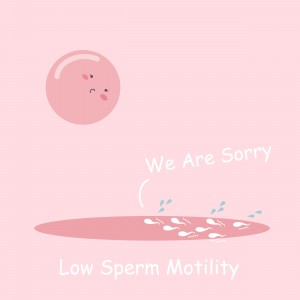Sperm motility is one of the factors measured in a semen analysis. It is an important factor in diagnosing fertility problems as the sperms have a lot of work to do swimming through the cervical canal, through the uterus and into the fallopian tubes to fertilise the waiting egg.
Two Measures of Motility are Used
The term motility actually refers to two things, firstly the number of sperm that are actively swimming (total motility), expressed as a percentage of the whole; and secondly the percentage of sperm that are making forward progress, usually termed progressive motility. Some sperm will be swimming actively, but going in circles or spinning on their axis, which is not likely to get them to the egg. These sperm would be termed motile but non-progressive. It is really the sperm that are both motile and progressive (swimming in a straight line) that is the key number. The medical term used to describe poor motility, below the following percentages, is asthenozoospermia. The lower value of the normal fertile range for total motility is 40% and for progressive motility is 32%. These figures seem a little arbitrary, and they are simply based on statistics, but motility remains the single most useful predictor of fertility.
Asthenozoospermia and ICSI
Having said this, that sperm motility is a key factor, assisted reproduction techniques now extend to selecting a single sperm, surgically removing its tail and physically injecting it into the egg. This technique is called intracytoplasmic sperm injection (ICSI) and gets round the problem of a poor motility as the sperm no longer needs to swim anywhere, so even men with zero motility can become fathers so long as some sperm can be found.

